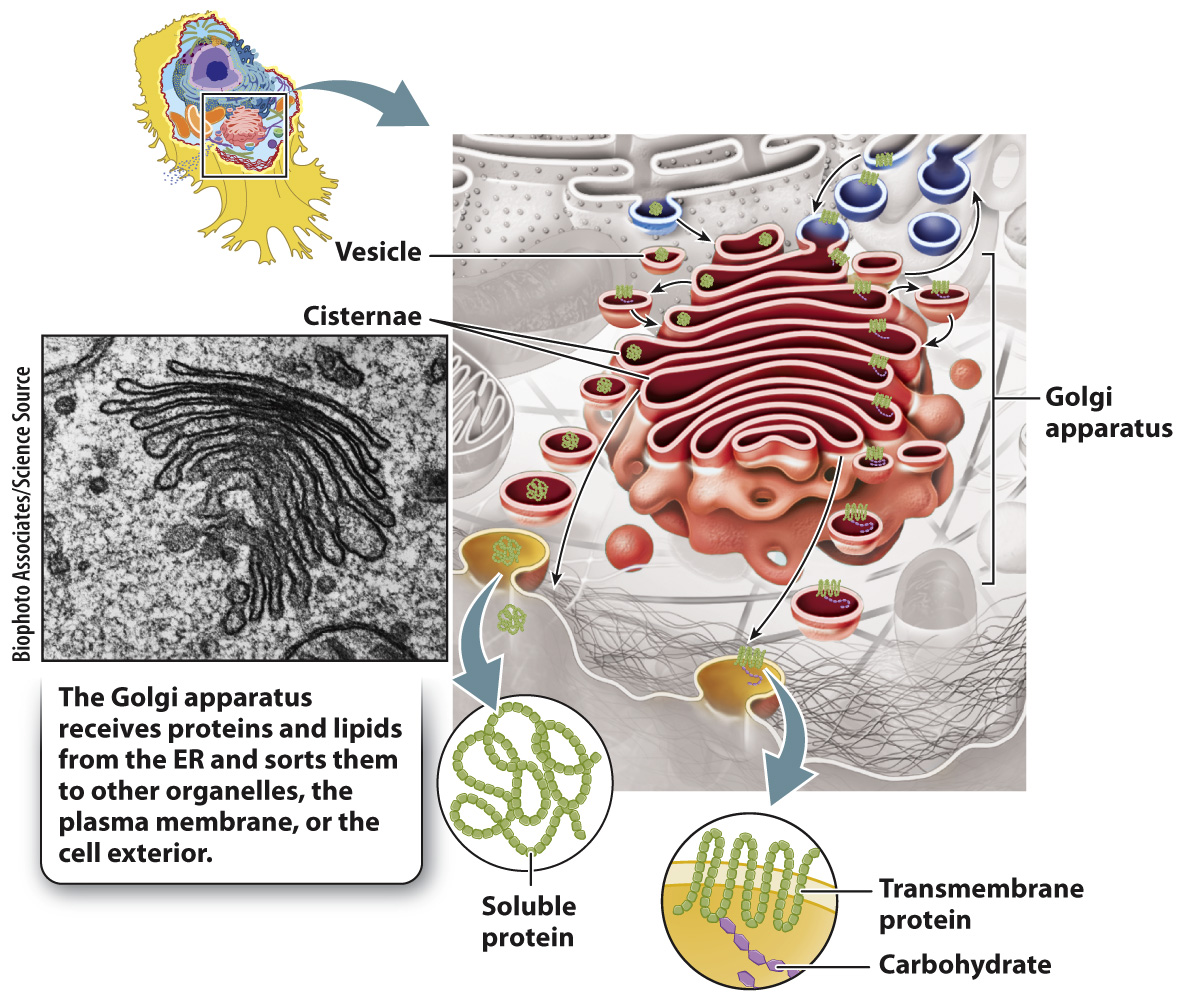The Golgi apparatus modifies and sorts proteins and lipids.
Although it is not physically continuous with the ER, the Golgi apparatus is often the next stop for vesicles that bud off the ER. These vesicles carry lipids and proteins, either within the vesicle interior or embedded in their membranes. The movement of these vesicles from the ER to the Golgi apparatus and then to the rest of the cell is part of a biosynthetic pathway in which lipids and proteins are sequentially modified and delivered to their final destinations. The Golgi apparatus has three primary roles: (1) It further modifies proteins and lipids produced by the ER; (2) it acts as a sorting station as these proteins and lipids move to their final destinations; and (3) it is the site of synthesis of most of the cell’s carbohydrates.
Under the microscope, the Golgi apparatus looks like stacks of flattened membrane sacs, called cisternae, surrounded by many small vesicles (Fig. 5.21). These vesicles transport proteins and lipids from the ER to the Golgi apparatus, and then between the various cisternae, and finally from the Golgi apparatus to the plasma membrane or other organelles. Vesicles are therefore the primary means by which proteins and lipids move through the Golgi apparatus to their final destinations.

Enzymes within the Golgi apparatus chemically modify proteins and lipids as they pass through it. These modifications take place in a sequence of steps, each performed in a different region of the Golgi apparatus, since each region contains a different set of enzymes that catalyzes specific reactions. As a result, there is a general movement of vesicles from the ER through the Golgi apparatus and then to their final destinations.
An example of a chemical modification that occurs predominantly in the Golgi apparatus is glycosylation, in which sugars are covalently linked to lipids or specific amino acids of proteins. As these lipids and proteins move through the Golgi apparatus, they encounter different enzymes in each region that add or trim sugars. Glycoproteins are important components of the eukaryotic cell surface. The sugars attached to the protein can protect the protein from enzyme digestion by blocking access to the peptide chain. As a result, glycoproteins form a relatively flexible and protective coating over the plasma membrane. The distinctive shapes that sugars contribute to glycoproteins and glycolipids also allow them to be recognized specifically by other cells and molecules in the external environment. For example, human blood types (A, B, AB, and O) are defined by the particular sugars that are linked to proteins and lipids on the surface of red blood cells.
While traffic usually travels from the ER to the Golgi apparatus, a small amount of traffic moves in the reverse direction, from the Golgi apparatus to the ER. This reverse pathway is important to retrieve proteins in the ER or Golgi that were accidentally moved forward and to recycle membrane components.